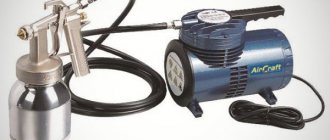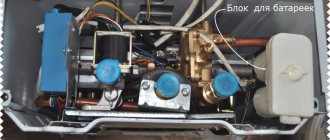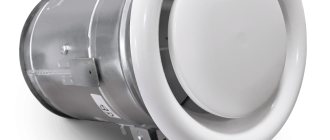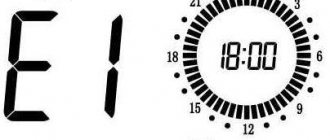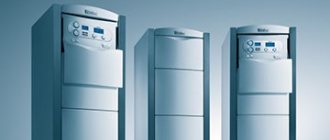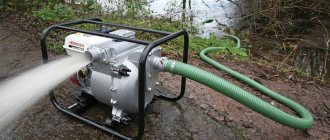A compressor is quite complex technical equipment; as it is used, it has the right to wear out and break. In this article we will consider all methods of maintenance and operation to maximize its life. Repair the compressor yourself
, if it is still broken, perhaps.
The reliability of compressor equipment largely depends on timely and high-quality maintenance. A large number of breakdowns of piston compressors are a consequence of poor quality cleaning of compressed air (abrasive dust, water, and other impurities). The use and timely replacement and cleaning of filter elements will delay compressor repairs for a long time.
The main reasons why an air piston compressor fails:
- Adverse operating conditions
- No scheduled maintenance
- Incompetent service staff
To ensure high-quality maintenance, operation and repair of the compressor with your own hands, it is necessary to solve all the above points.
The main difference between maintenance and repair of a compressor is that during repairs a forced replacement of certain parts is carried out, and during maintenance, parts are replaced as necessary, depending on their actual condition.
Why doesn't the compressor turn on?
Published by Admin Under Compressors on October 15, 2016
An air compressor is a mechanism that drives pneumatic devices, often used in screwdrivers, drills, etc. In addition, this is an indispensable tool for summer residents - processing, spraying plants, pruning trees, whitewashing - these are just some of the capabilities of this unit. The compressor also inflates tires and is used to blow out debris in hard-to-reach places. The list of possible uses of the mechanism on the farm is very large. If you have it, then, of course, you have already appreciated its usefulness. But, as with any technical device, it is possible that the compressor does not turn on. Let's look at the likely reasons why this happens and how to eliminate them. The design of a household compressor is quite complex; additional elements are added to the classical design of the device, for example, for air humidification and automation of operation. This makes it difficult to find the reason why the unit does not start. The fact that the compressor does not turn on can be influenced by external factors and mechanism failures. External factors include low temperature in the room where the unit is installed and insufficient network voltage. Let's talk in more detail about technical problems.
The system supercharger does not start - one of the possible reasons. The engine does not turn on if there is no power. You need to check the connection to the socket, the presence of “zero” and “phase” with an indicator screwdriver. If everything is in order with this, then we check the condition of the compressor fuses. If there are burnt out ones, they are replaced with elements of a similar model. After this, we try to start the installation again, if this again fails and the fuses “burn out” again - the problem lies in a short circuit at the input of the circuit, it must be eliminated. If everything is in order with the fuses, we check the relay.
Its malfunction is the second possible reason for the air compressor not turning on. The pressure control switch may not work due to burnout of any part of it, or due to incorrect level settings. In the latter case, we release the gas from the cylinder, start the supercharger, and if the engine starts working, then we reconfigure. If not, then you need to repair the relay.
The compressor does not turn on; if the piston system overheats, the thermal protection circuit breaker turns on. You need to give the heater time to cool down, at least 15 minutes. When the engine hums but does not start, the problems lie either in low voltage in the network (normally it should be 220V) or problems with high pressure in the receiver. If the voltage corresponds to the desired value, then we normalize the pressure. To do this, turn the automatic switch to “off”, and after 15 seconds to “auto”. It didn’t help - check to see if the control valve is clogged. If everything is fine with it, but the compressor still does not turn on, you need to repair the pressure control relay again. It is best to carry out repairs in specialized centers.
The reason the device does not start may be that when it is turned on, the thermal protection is triggered or the fuse is blown. Let us explain why this happens. The fuse does not match the rated power specified in the documentation, or the network is overloaded. To eliminate the problem, free the network from excess load and replace the fuses with ones that meet the requirements. The compressor may not turn on due to more serious problems - for example, a broken voltage relay. If there is a suspicion that this is the reason, then it is worth connecting the motor bypassing this circuit element. If it starts without a relay, then that is the problem. Voltage relay repairs are carried out at service centers.
Another serious reason for the unit not working is a breakdown of the bypass valve. It is also better to fix it at technical support sites for the device.
If all the problems listed above are not found, conduct a visual inspection of all parts of the device; perhaps some of them are cracked, damaged or broken, then it needs to be replaced, even if the damage is minor.
Summarizing all of the above, we can distinguish four main directions for searching for a problem: • electrical problems; • incorrect settings; • part failure; • pollution.
To avoid problems with the operation of the mechanism, you need to follow a number of simple recommendations: 1. Regularly check the oil level, use what is specified in the technical data sheet. After filling, let the compressor idle for a few minutes to allow the oil to spread well. It is replaced every 500 hours of operation of the unit. 2. Clean the air inlet filter frequently. 3. Every 16 hours of operation, drain the condensate from the receiver. 4. After work, turn off the power supply and “bleed” the air from the high pressure system. 5. The device must be grounded.
If all these operations are performed from the moment you purchase the unit, then there will be no reason to worry about its operation for a very long time. And to troubleshoot problems, it is better to contact specialists, especially if it concerns the replacement or repair of main parts of the compressor, such as relays or valves.
Unjustified overheating of the unit
The operation of automatic thermal protection is understandable in cases where the temperature in the room is high, there is a low mains voltage (we check with a multimeter) or the installation has been operating without interruption for a long time.
If everything is in order with the room temperature, voltage and operating mode, it means that the filter installed at the atmospheric air inlet is clogged. The filter must be cleaned, rinsed, dried and reinstalled. Such manipulations must be performed regularly, and with constant work - daily. This reduces the load on the compressor motor and reduces overall system wear.
Air compressor device
In order to deal with device problems, you should consider the principle of operation and what elements it consists of. Among the design features we note the following:
- The main element is a supercharger, represented by an engine with various performance indicators. It creates the required air flow.
- A cylinder or other container containing air is used as a receiver. It is connected to the engine using special hoses, characterized by high strength and resistance to environmental influences.
The main requirement for a compressor is safety. The mechanism may not start for a variety of reasons. An example is that if the pressure is not controlled, then there is a possibility that the installed engine will simply burn out. In addition, there is a possibility of the cylinder exploding due to too high pressure. That is why the design is equipped with a special electronic relay, which automatically turns off the equipment.
Piston devices have become quite widespread. They may not start due to malfunction of various elements. The design is represented by a combination of the following elements:
- Frame.
- Flywheel for transmitting rotation.
- Cylinder head.
- valves.
- Cylinder.
- Piston.
- Connecting rod.
- Piston pin.
- Stuffing box.
- Crankshaft.
In addition, the system is equipped with a check valve, which significantly increases the reliability of the device. More complex devices are characterized by the presence of other automatic elements, due to which the required pressure is maintained.
The compressor may not start for a variety of reasons. The most common malfunctions are as follows:
- The main blower does not start.
- From time to time the machine is triggered, which is associated with an increase in the temperature of the mechanism.
- When you start the device, the machine is triggered and turns it off.
- Air is pumped slowly.
- When the supercharger is turned off, high pressure remains in the receiver.
- During operation there is strong vibration.
- The compressor operates intermittently.
- The flow is consumed below the established norm.
Quite often there is a situation when the engine does not start. In this case, you will not be able to use the equipment.
Productivity has dropped
A drop in performance can be due to several reasons. The suction air filter is clogged and clogged. Remove and clean the filter with compressed air or replace it. Basically, in piston compressors it is made of ordinary foam rubber.
There may be an air leak somewhere. Inspect all incoming and outgoing tubes and hoses. Just as in the previous case, wear and incorrect operation of the valves is possible, this greatly affects performance. With sufficiently long use, the piston rings wear out and sealing is lost. In more serious cases, the cylinder and pistons are worn, scratched or have other external defects, which leads to a loss of compression and the compressor stops pumping air.
It is worth checking the tension of the belt connecting the electric motor and the crankshaft of the piston system. If loosened, slippage may occur and the compressor will no longer pump air properly.
Knocking and rattling in the cylinder and piston group
One of the reasons for compressor failure is a faulty piston group. Recognizing a defect in this system is quite simple. They are usually accompanied by knocking, roaring, grinding and other metallic sounds. If the compressor knocks, then its discharge part, where there are many metal parts that interact with each other, is faulty. Due to their friction and wear, extraneous noise and unpleasant sounds appear.
You should not start with such a breakdown; if possible, you should fix it as soon as you hear the first signs of their manifestation. Main malfunctions if the compressor begins to knock and operate louder than before:
- Broken, worn out bearings, connecting rod bushings
- The bearings on the crankshaft have failed.
- Worn piston, rings, piston pin
- Worn cylinder
- Loose cylinder and head bolts
- A solid particle has entered the cylinder
- The cooling impeller has become loose on the pulley
To repair these breakdowns, in simple cases it is enough to tighten all the bolts and nuts. If the piston, cylinder, crankshaft or connecting rod are worn out, then a comprehensive overhaul is required. When repairing a piston group, you may have to bore the cylinder, if it is badly worn and has external defects, and select a repair piston to new sizes. The following are possible defects in the piston system:
- Changing the diameter of the piston, cylinder
- Distortion of the shape of the cylinder mirror shape
- Risks, scratches, burrs on the cylinder walls
- Cracks in the main working part
- Cracks and broken flanges
During long-term operation, due to wear, marks appear on the cylinder surface, and the inner diameter of the sleeve for the eccentric shaft increases. During repairs, cylinders are restored by pressing sleeves into them. Worn bushings for the eccentric shaft are replaced. This repair is quite difficult to do with your own hands without the necessary tools and equipment. Since the most labor-intensive and critical stage is the restoration of the cylinder. Boring is performed on a vertical boring machine using a special device.
This concerns the cylinder; below we will consider the main malfunctions of the compressor crankcase.
- Cracks in the walls of the crankcase cavities
- Deviations in the size and shape of landing pads
- Warping of seats
- Seats for crankshaft bearings are broken
When these units wear out, they must be replaced with new ones. The hole for the bearings is bored on a horizontal boring machine for a larger diameter of the bearings or for pressing in a bushing, followed by boring the pressed bushing to the required diameter. Repair of a compressor of this complexity should be carried out by qualified specialists.
Below, spare parts “repair kit” for major repairs of the compressor and piston group.
Compressor motor does not start
As previously noted, quite often it is the engine that fails. If the compressor malfunctions like this, it cannot be used for its intended purpose. Among the features we note the following:
- If the installation does not start and a corresponding hum does not appear, then disassembling the compressor is carried out only after checking the voltage. An indicator is ideal for this. If there are phases, then it is recommended to check the fuse, which also often fails.
- If the fuse blows again, there is a possibility that a short circuit may occur in the system.
- There is a possibility that the engine has serious mechanical damage. Operation under heavy load, overheating or voltage surges cause the device to fail.
In general, we can say that there are quite a large number of reasons why the compressor does not start.
Is DIY repair advisable?
The example with the electronic compressor clutch shows that independent repair of failed elements of a car’s air conditioning system is not always justified. Although, with the proper level of qualification of the car enthusiast, it is acceptable and often practiced. The ratio of the cost of individual elements of a car’s climate control system (depending on its class and brand) and the price of repairs at a service station can be judged by the following figures:
- an electronic compressor clutch costs between 1,500 and 6,000 rubles;
- the compressor itself - 12,000–23,000 rubles;
- evaporator - 1500–7000 rubles;
- expansion valve - 2000–3000 rubles;
- air conditioner radiator - 3500–9000 rubles;
- cabin filter - 200–800 rubles;
- refilling the system with freon and compressor oil - 700–1200 rubles.
The cost of repair depends on its complexity, the make of the car, the type of air conditioner and the reputation level of the service station. Based on average indicators, a complete repair of a compressor, for example, costs between 2000–2500 rubles, and flushing a single-circuit air conditioning system (+flushing fluid) can cost 10,000 rubles. Replacing a compressor pulley, which is easy to do yourself, costs (excluding the cost of the belt itself) at least 500 rubles. If we take as a conditional ceiling the price for a comprehensive repair of an air conditioner on a premium car with the replacement of refrigerant, oil and compressor, then the amount can reach 40,000 rubles.
The compressor does not turn on or turns off immediately after starting or during operation
First of all, check the power cable and fuses. The problem may also be caused by incorrect setting of the pressure switch. The reason that the compressor does not turn on may be the activation of the thermal relay. This option is possible if the equipment has previously worked in intensive mode for a long time and has not had time to cool down. The device may not turn on due to a faulty automation unit, a blown fuse, or tripped overload protection. The worst option is engine combustion.
A little about service
In order for equipment to function as expected, maintenance must be performed periodically. Thus, it is recommended to change the oil every 500 hours of operation, but at least once a year, provided that a high-quality and recommended brand is used. In homemade compressors, you don’t have to solder the oil fill tube, this will make it easier to replace it in the future. Check the oil level; leaks and burnout are possible. When dirty, the protective grille must be removed and cleaned. Check the grounding periodically to avoid accidents and equipment failure.
You also need to periodically inspect the valves - clean with solvent and polish if necessary.
Regularly drain the water from the receiver, clean the safety valve and the air inlet filter. This will protect your compressor from premature wear. By performing these manipulations daily, you yourself will be able to establish the optimal frequency of these actions for your conditions and scope of work. If the compressor has been idle for a long time, it is recommended to clean and lubricate the parts before starting. Carrying out these preventive measures will prevent or delay breakdowns and repairs of the installation, and will extend its service life.
Source
System supercharger does not start
Often the compressor does not start for a variety of reasons. You can avoid this situation by doing the following:
- Operate in accordance with manufacturer's recommendations.
- Perform appropriate maintenance.
- Perform timely replacement of main elements.
- Use only for its intended purpose, reducing the load and providing the required cooling.
There are quite a few different reasons why the supercharger does not turn on. Let's look at the most common ones in more detail.
Types of faults in piston compressors
Various breakdowns and malfunctions occur with piston compressors. Some piston compressor malfunctions can be resolved yourself, while others will have to be addressed to a workshop or service center for compressor repair. What kind of breakdowns threaten piston compressors:
- mechanical failures;
- electrical;
- associated with improper operation.
What are the signs that indicate that the piston compressor is faulty:
- compressor performance has decreased;
- the belt slips;
- a hissing sound is heard when the compressor is turned off;
- the piston compressor stops during operation;
- the compressor vibrates;
- the compressor motor is humming;
- excess oil is formed in the compressed air and receiver;
- The piston compressor does not start.
Mechanical failures of reciprocating compressors
The most common mechanical failures of piston compressors:
- compressor air filter contamination;
- mechanical damage to the suction air filter;
- wear or breakdown of the cylinder-piston group.
Air filter contamination occurs when using a piston compressor in conditions of excessively polluted air, in the presence of construction dust, cement suspension and other impurities in the air.
Due to filter contamination, overheating of the compressor occurs, deterioration in the quality of its operation and premature failure.
Breakdowns of the piston compressor air filter, including damage to its integrity, occur during rough transportation and non-compliance with the operating rules of the equipment. When operating a piston compressor with a faulty air filter, the following problems are possible:
- dust particles entering the valve assembly and compressor cylinders;
- failure of compressor valves and cylinders;
- occurrence of rings;
- oxidative processes in oil;
- compressed air contamination.
Overheating of the piston compressor and a decrease in the compression level may be associated with a violation of the lubrication regime. Subsequently, you may encounter some malfunctions in the operation of the piston compressor:
- failure of sliding bearings;
- broken rings;
- jamming or breakage of connecting rods.
To avoid compressor breakdown due to improper lubrication, it is recommended to strictly follow the rules:
- use only compressor oils in a piston compressor, not motor oils;
- use oil recommended by the manufacturer for a specific type of piston compressor;
- monitor the oil level in the compressor;
- change the oil according to the instructions.
Electrical breakdowns of piston compressors
Some malfunctions in the electrical part of a piston compressor lead to mechanical breakdowns of the equipment. These electrical faults include:
- phase imbalance;
- overload on the motor shaft;
- defective components of the device.
The listed electrical malfunctions lead to the following problems:
- to damage to the rotor shaft;
- to loosening the stator core;
- to weakening of the rotor core crimping;
- to melting of babbitt in sliding bearings;
- to wear of rolling bearings;
- to damage to the compressor impeller.
There are also actual electrical malfunctions of piston compressors:
- accidents associated with large voltage surges in electrical networks;
- winding short circuit;
- broken conductors;
- insulation breakdown caused by a short circuit;
- accidents caused by broken or wet insulation.
Failures of piston compressors caused by improper operation
Often piston compressors break down if the operating mode is not followed, for example:
- the compressor runs for more than 15 minutes without interruption;
- the total operating time of the compressor per hour exceeds the permissible limit; for household compressors this time is 30 minutes.
Typical failures of a piston compressor caused by improper operation:
- the external components of the compressor are dirty;
- the plastic case broke;
- the protective casings and fan impellers are broken;
- the pressure regulator is broken;
- pipeline fittings have broken.
Oil enters the working chamber
If oil gets into the working chamber, this is quite a bad sign; of course, this will not lead to complete failure of the compressor, but it may very well cause harm to the painting work and the occurrence of defects during painting. The main reasons for oil getting into places where it is not needed: Low viscosity oil is poured, that is, the oil is too liquid, it seeps through the seals and rings. Oil level is too high. Due to excess oil, it is forcefully squeezed out and enters the chamber. Incorrect oil used. Fill only with special compressor oil.
The pistons and rings in the cylinder block are worn out. Also, wear of the cylinder itself affects the penetration of oil into the working chamber. To eliminate the malfunction, repair of the piston group compressor, which is described above, is required.
Causes
Most problems that cause the compressor to not start can be resolved on your own. The following are quite widespread:
- Triggering of the thermal protection circuit breaker. During operation, the mechanism can heat up to a significant temperature. That is why the relay eliminates the possibility of such a situation occurring.
- Incorrect operation of the pressure control relay in the system. Too much will cause the hose or receiver to rupture.
- Low voltage in the network.
- The appearance of a significant leak. Cracks or other defects in the line cause pressure loss.
Some of them can be eliminated only by directly replacing the main elements. The compressor does not turn on in some cases due to a power supply failure.
Repair recommendations
Most users are interested in specific ways to troubleshoot problems.
If the system begins to leak in the cold season, then the channel needs to be warmed up. The optimal heating temperature can be considered +7 degrees. But if an ice plug has already formed, then you will have to wait for natural warming, only in this way the plug will safely dissolve. You can also arrange for water flushing of the drainage using a compressor unit or pump.
Filters from the split system can be removed by opening the front panel. They just need to be washed under running water. For stubborn dirt, a brush can be useful.
In addition, independent repairs may be a reason for denial of warranty service.
Solutions
The repair methods used largely depend on the type of device problem. Do-it-yourself compressor repair is carried out as follows:
- If the engine hums but produces insufficient power, you should check the electrical readings. If the voltage is less than the set one, then you need to look for another source of energy
- Replacing the fuse is quite simple. To do this, you need to purchase a version designed for the same voltage. It is not recommended to purchase a fuse that is more resistant to overloads.
- Triggering of automatic thermal protection can occur for a variety of reasons. Examples include engine malfunction, too high load and some other issues. Cooling can be ensured by installing the equipment in a well-ventilated area. Other malfunctions that lead to overheating often cannot be resolved on your own.
- Some safety elements and measuring instruments may also fail over time. An example is incorrect pressure gauge readings. In such a case, it is enough to replace the measuring device.
Operating principle and components
A compressor is a device for increasing pressure and moving gas to the required source (spray gun, grinders, impact wrenches, airbrushes and any other pneumatic equipment). The main equipment in demand in body repair has become a piston, oil-type compressor. In piston engines, the volume of the working chambers changes with the help of pistons that perform reciprocating motion.
They have different numbers of working cylinders and are distinguished by the following structural arrangement:
- Horizontal
- Vertical
- Opposite
- Rectangular
- V and W shaped
- Star-shaped
The main design flaws: incomplete balance of their moving parts, the presence of a large number of friction pairs, etc.
All this causes failure and subsequent repairs. Before you repair the compressor yourself, you need to study its technical structure. The photo below shows a diagram of a single-stage compressor, piston group.
- Crankshaft
- Frame
- connecting rod
- Piston pin
- Piston
- Cylinder
- valves
- Cylinder head
- Valve plate
- Flywheel
- Oil seals
- Crankshaft bearings
On the housing near the electric motor there is an automation unit called a presostat. Using it you can adjust the compressor. It is possible to lower or increase the pumped pressure.
